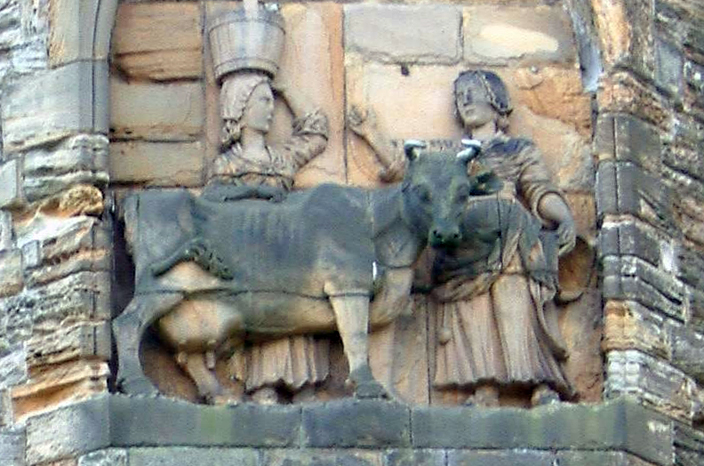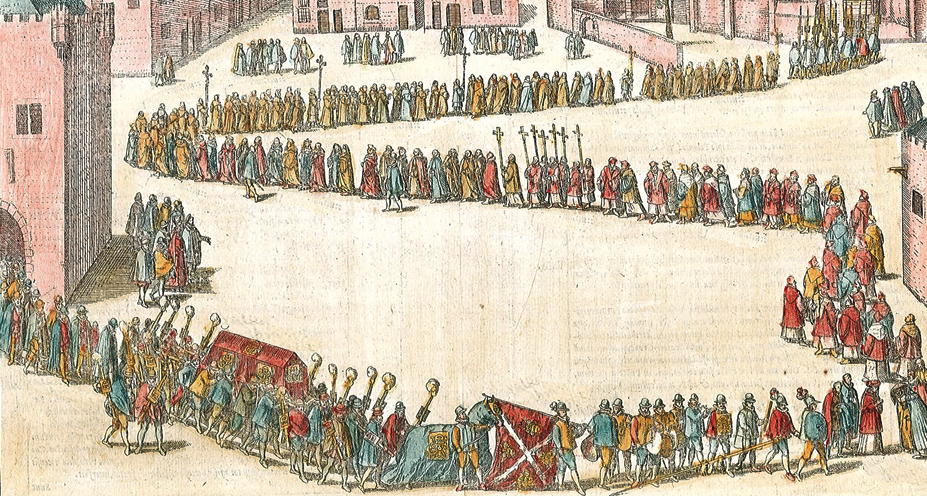Cuthbert’s Move to Durham: Two Stories
There are two stories about Cuthbert’s eventual resting place in Durham. Which one do you prefer?
The Story of the Dun Cow
Legend has it that at some point on the monks’ journey back to Chester le-Street with the body of St Cuthbert, the cart carrying the coffin suddenly stopped and could not be moved. The leader of the community, Bishop Aldhun, had a vision of St Cuthbert demanding to be taken to a place called ‘Dunholme,’ but nobody knew where it was.
The puzzled monks stood perplexed at how to find ‘Dunholme'. Then a cow girl walked by, and asked another young woman if she had seen a lost dun (brown) cow.
The young woman said she had seen the cow heading in the direction of Dunholme – and pointed out the way.
The monks, who had overheard this exchange, decided to follow the cow-girl, and found that St Cuthbert’s coffin moved readily in that direction. They continued along that road and got to Dunholme (Durham).

The story of the Dun Cow, as depicted in an eighteenth-century panel on the north facade of Durham Cathedral.
A Son in Law in Durham
There were several factual reasons for St Cuthbert’s Community to have chosen Durham. Like many Anglo-Saxon priests, the community’s leader, Bishop Aldhun, was married, and, in turn, his daughter was married to Uchtred, who had become the Earl of Northumbria. As a dowry, Aldhun had received extensive land for the Church, which included Durham.
In seeking a safe haven from raids, Durham, a peninsula protected by a river with very steep banks, was ideal.
The Community’s move to Durham was beneficial from the point of view of Uchtred as well – it would provide the reason, and perhaps the finances for the construction of a defensive complex, and St Cuthbert would bring tremendous prestige, and through continuous pilgrimage, prosperity.

